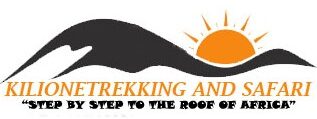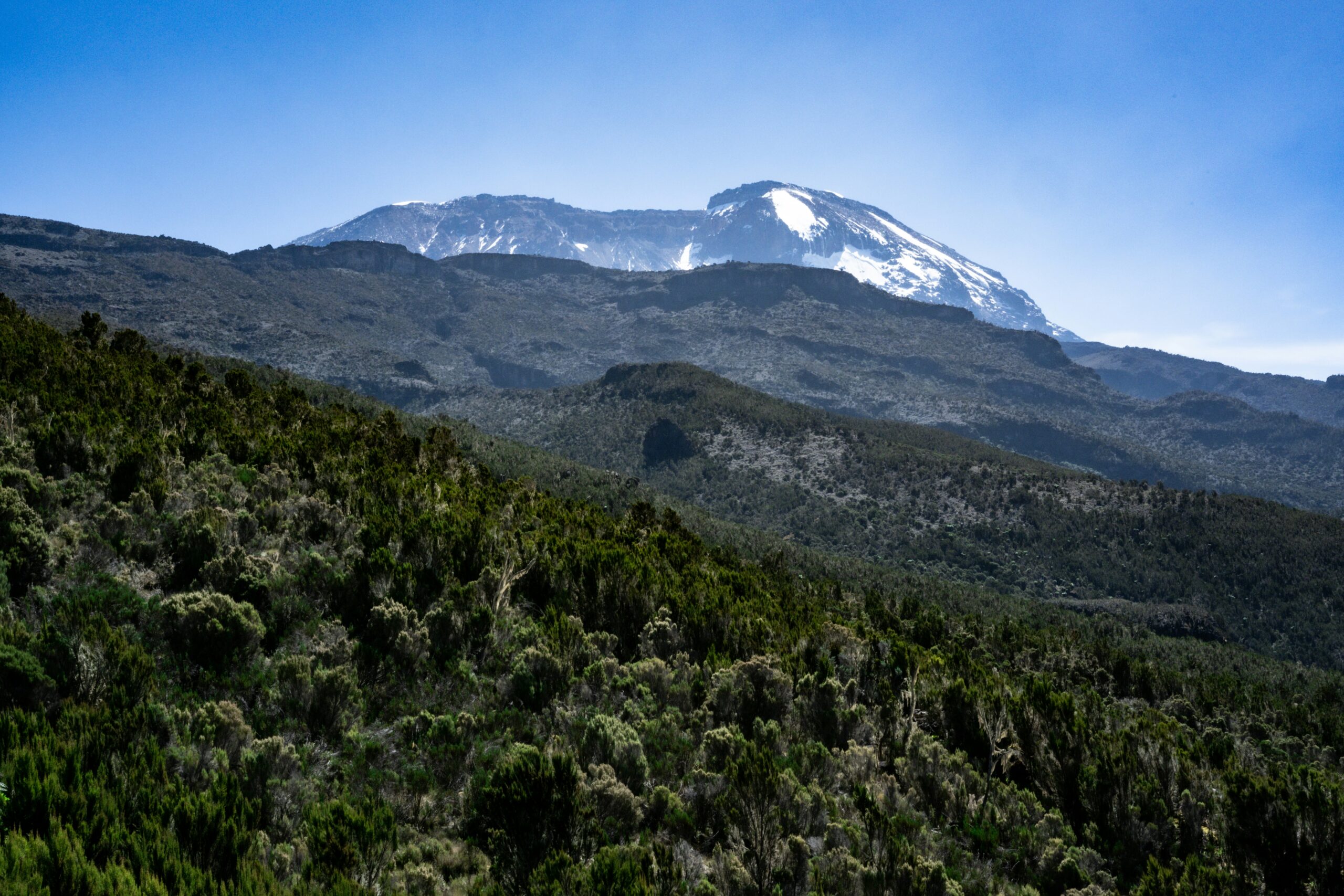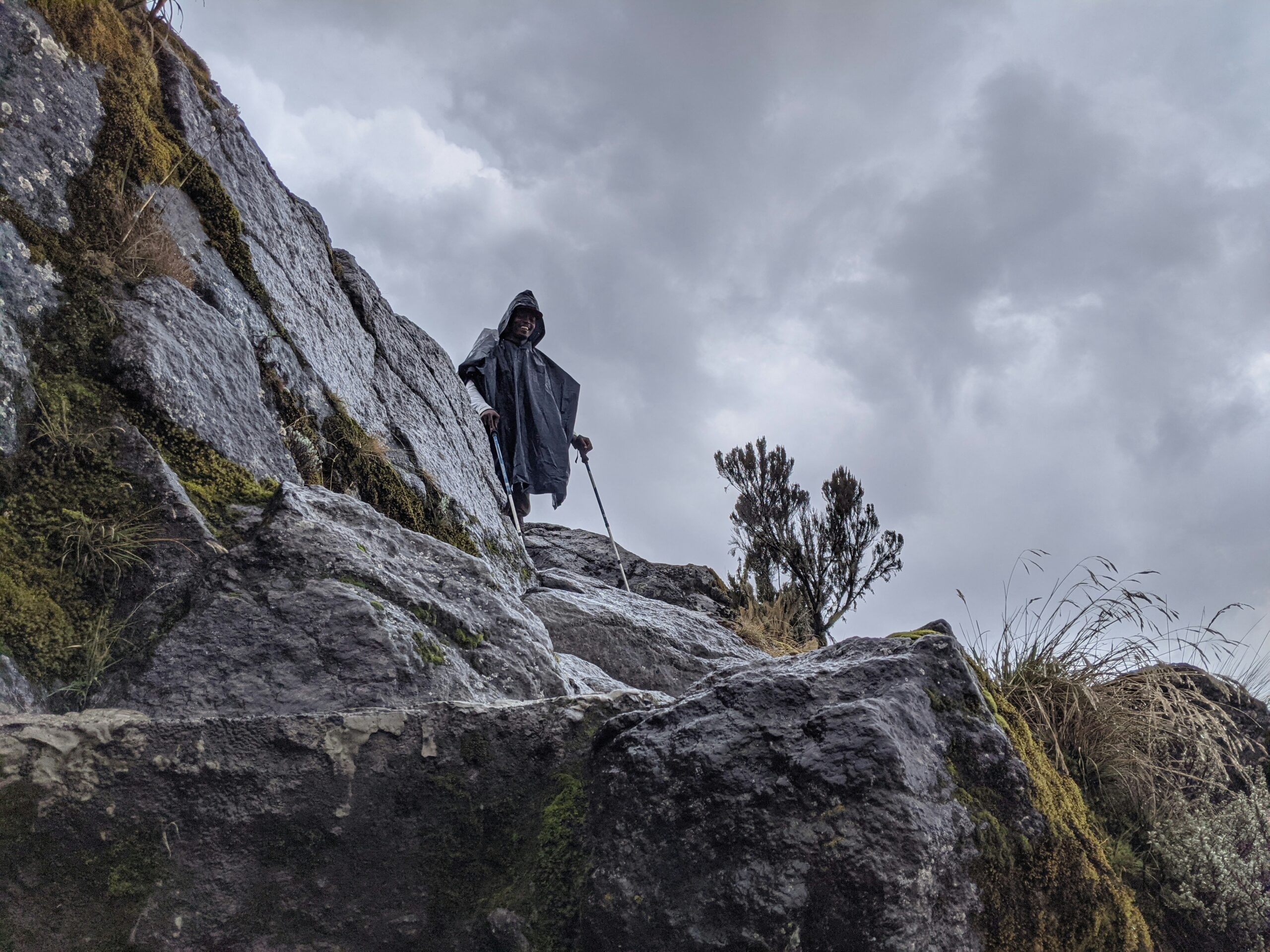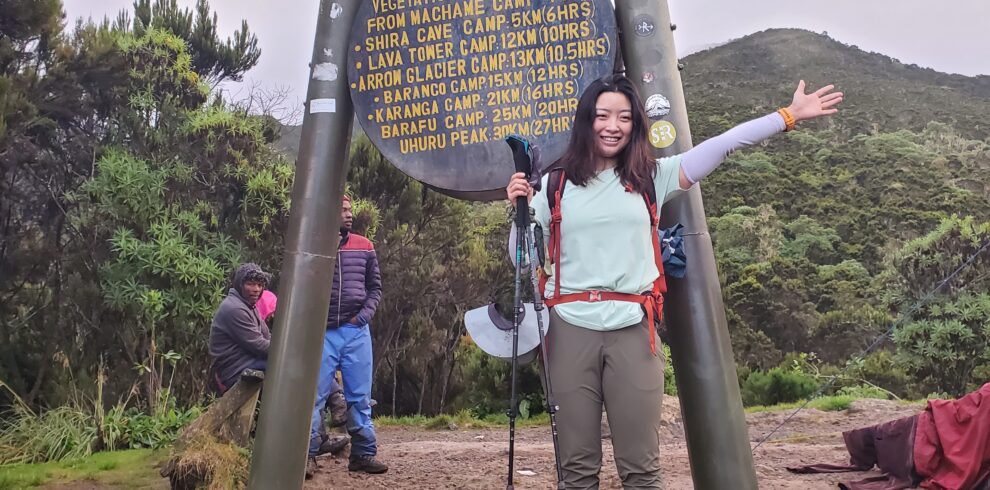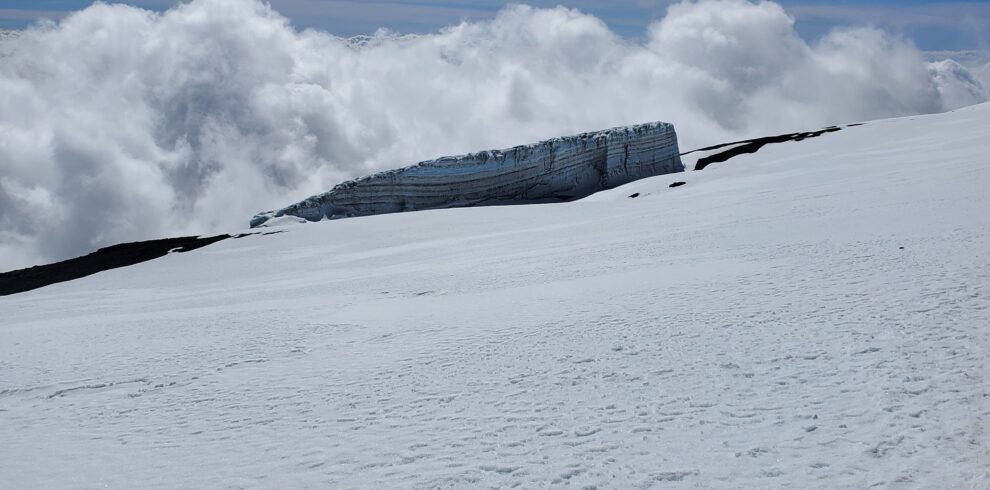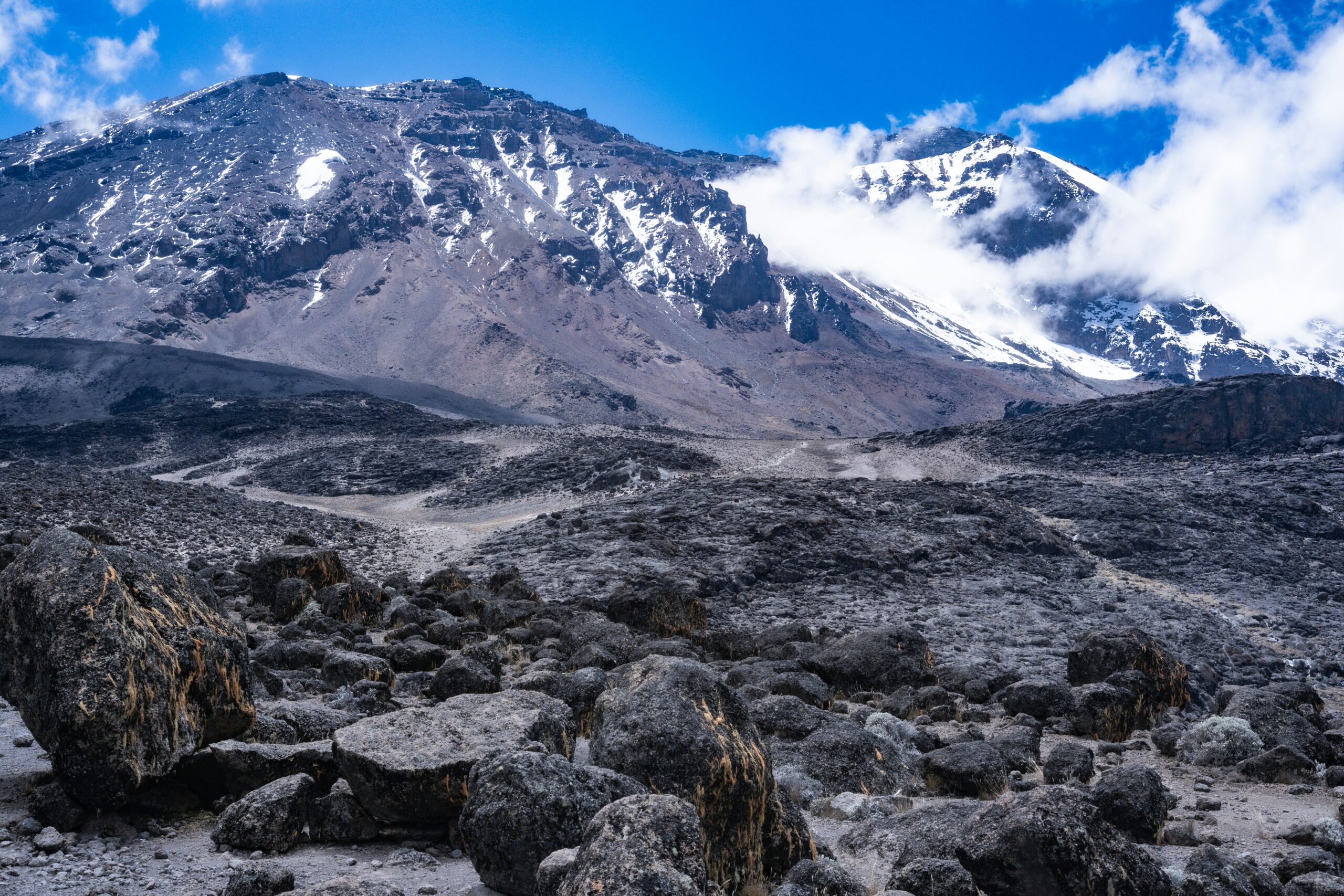The Umbwe Route is one of the shortest but steepest routes to the summit of Mount Kilimanjaro, making it a great choice for experienced climbers who are looking for a challenging and direct ascent. While the route offers fewer opportunities for acclimatization, it rewards trekkers with a unique, less crowded experience and stunning views of the mountain. The trek takes you through several distinct ecological zones, from dense rainforests to alpine deserts, before reaching the summit at Uhuru Peak.
Umbwe Route
The Umbwe Route is a highly rewarding and challenging trek, providing trekkers with an exhilarating experience as they ascend to Uhuru Peak. It’s perfect for those looking for an intense climb with an immersive and scenic journey to the top.
Highlights
- Challenging Direct Ascent – A steep and demanding route perfect for experienced climbers.
- Less Crowded – A quieter, more private experience compared to other routes.
- Iconic Barranco Wall – A thrilling, steep climb with fantastic views.
- Stunning Views of Kibo and Mawenzi – Unmatched panoramic views of the mountain’s peaks.
- Diverse Ecosystems – Trek through rainforest, moorland, alpine desert, and summit terrain.
- Summit Success at Uhuru Peak – Reaching the highest point on Mount Kilimanjaro at 5,895m.
- Acclimatization Opportunity – A challenging ascent that aids in proper acclimatization.
- Rainforest Descent – A refreshing walk through lush vegetation on the final day.
Umbwe Route
Duration: 5–7 hours
Elevation Gain: 1,000m
Begin your trek at Umbwe Gate, which is located at the foot of the mountain. The trail starts steeply through dense rainforest. As you ascend, the forest becomes more lush, and the path is quite direct, making for a physically demanding first day. Reach Umbwe Camp in the afternoon, where you can rest and acclimatize to the higher altitude.
Duration: 6–7 hours
Elevation Gain: 1,100m
The trek continues through the moorland zone, and the path becomes rockier and steeper. After a challenging ascent, you will reach Barranco Camp, located beneath the imposing Barranco Wall. From here, you'll have stunning views of the surrounding valleys and the summit. This camp is a good place for acclimatization as you prepare for the next day’s climb.
Duration: 4–5 hours
Elevation Gain: 600m
Today, you'll tackle the famous Barranco Wall, a steep but manageable climb that requires both hands and feet. After the wall, the path flattens out, leading you through alpine desert terrain to Karanga Camp, where you’ll have incredible views of Kibo Peak. This shorter day allows time for acclimatization.
Duration: 4–5 hours
Elevation Gain: 638m
The route today leads you through alpine desert, with more exposure to the mountain’s barren landscapes. After reaching Barafu Camp, take time to rest and prepare for the summit attempt. Barafu is where you’ll spend the night before making your final ascent to Uhuru Peak.
Duration: 12–14 hours
Elevation Gain: 1,222m
Summit Day: The final ascent begins around midnight. You’ll climb through the night to reach Stella Point on the crater rim by sunrise. From Stella Point, it’s another hour to reach Uhuru Peak, the highest point on Mount Kilimanjaro. After summiting, descend back to Mweka Camp for an overnight rest.
Duration: 3–4 hour
The final day involves descending through the rainforest to Mweka Gate. This day offers a relaxing conclusion to your trek, and upon arrival at the gate, you will receive your summit certificate to commemorate your successful climb.
What's Included/Excludes
Includes
- Transportation
- Private transport to and from Kilimanjaro International Airport to your accommodations in Moshi.
- Transportation to and from the Kilimanjaro gate.
- Accommodation
- 2 nights of accommodation in Moshi (before and after the climb).
- Park Fees & Permits
- Kilimanjaro National Park entry fees.
- Camping fees.
- Team Kilimanjaro rescue fees.
- 18% VAT on tour fees and services.
- Equipment
- 4-season mountain tents (Mountain Hardware).
- Double-layered sleeping mats, 4 inches (10 cm) thick.
- Mountain Crew & Services
- Friendly and professional mountain guides, cook, and porters.
- Fair wages for the mountain crew, as approved by Kilimanjaro National Park Authority (KINAPA) and Kilimanjaro Association of Tour Operators (KIATO).
- Government taxes.
- Food & Water
- 3 meals daily while on the mountain.
- Enough treated and filtered drinking water throughout the trek.
- Hot water for washing.
- Safety Equipment
- Portable oxygen tanks.
- Oximeter.
- Emergency first-aid kit/oxygen tank.
- Mountain climbing certificates (Gold for reaching Uhuru Peak and Green for reaching Stella Point).
Exclude
- Personal Costs
- Drinks at your hotel before and after the climb.
- Personal items and toiletries.
- Laundry services (available at the hotel).
- Travel Costs
- Travel insurance.
- Flights to and from Tanzania.
- Tips & Gratuities
- Tips for guides, porters, and cook.
Frequently Asked Questions About the Umbwe Route
The Umbwe Route is one of the most challenging and direct routes to the summit of Mount Kilimanjaro. It’s steep, with a quick ascent that requires good fitness and stamina. It’s less crowded, offering a more private experience.
The Umbwe Route is typically completed in 6 days, allowing for proper acclimatization and summit success. It involves a steep climb, but with a gradual descent to help your body adjust.
No, the Umbwe Route is recommended for experienced trekkers who are in good physical condition. Due to its steep nature, it’s not ideal for first-time climbers without prior hiking experience.
The best time to trek the Umbwe Route is during the dry seasons, which are from June to October and December to February. These months offer the most stable weather for climbing.
Yes, like all routes on Mount Kilimanjaro, the Umbwe Route requires a trekking permit issued by the Tanzania National Parks Authority (TANAPA). Your tour operator will handle the permit arrangements.
You will need high-quality mountain gear, including waterproof clothing, warm layers, climbing boots, gloves, and a headlamp for summit day. Your operator will provide a gear list to ensure you’re prepared.
The Barranco Wall is a steep, rocky climb, but it is not technical. It requires using your hands and feet, but it’s manageable for trekkers with basic climbing skills. It’s an exciting challenge that rewards you with fantastic views.
The Umbwe Route is known for its rapid ascent, which may increase the risk of altitude sickness. However, the steep nature of the trek allows for acclimatization at each camp, particularly with the Barranco Camp and Karanga Camp stops, helping your body adjust to the altitude.
Yes, many climbers opt to take the Umbwe Route for the ascent and descend via other routes like Mweka or Marangu for variety and a different experience.
Yes, the trek includes a professional guide, assistant guides, porters, and cooks to assist with carrying gear, preparing meals, and ensuring your safety throughout the climb.
Umbwe Route Highlights
Why Choose the Umbwe Route?
Challenging and Rewarding: The Umbwe Route offers a direct and steep ascent, ideal for experienced climbers. The difficulty level makes it perfect for trekkers looking for a true challenge.
Less Crowded: This route is less popular compared to others, providing a more private and peaceful experience while trekking Mount Kilimanjaro.
Iconic Barranco Wall: The Barranco Wall is one of the most famous parts of the trek. This rocky cliff requires both hands and feet to climb but rewards you with stunning panoramic views.
Diverse Ecosystems: As you ascend, you’ll pass through several ecological zones, including lush rainforests, moorland, and alpine desert, each offering its unique landscapes.
Summit at Uhuru Peak: Reach the highest point on Mount Kilimanjaro at 5,895m (19,341ft). The summit views are breathtaking, providing a sense of accomplishment like no other.
Acclimatization Opportunity: The Umbwe Route offers a challenging ascent, but with ample acclimatization stops like Barranco Camp and Karanga Camp, ensuring that you’re well-prepared for the summit.
What to Expect on the Umbwe Route
Duration: 6 days
Difficulty: High (Recommended for experienced climbers)
Best Season: June to October and December to February
Summit Elevation: 5,895m (19,341ft)
Route Features: Steep terrain, diverse ecosystems, challenging Barranco Wall, less crowded, stunning views of Kibo Peak and Mawenzi Peak
